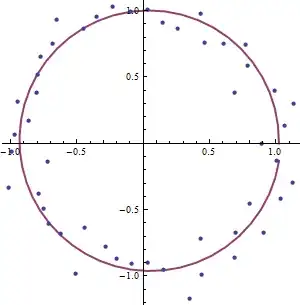If you're willing to assign a prior Beta distribution on $p_1$ and $p_2$, you could do a Bayesian analysis. The model would be
\begin{align}
p_1&\sim \operatorname{Beta}(\alpha_1,\beta_1) \\
p_2&\sim \operatorname{Beta}(\alpha_2,\beta_2) \\
y_1&\sim \operatorname{Bin}(p_1,n_1) \\
y_2&\sim \operatorname{Bin}(p_2,n_2)
\end{align}
Where $\alpha$ and $\beta$ are your hyperparameters for $p_1$ and $p_2$, respectively. Here is the example done in R and JAGS. This code can easily be extended to include different $n$. A solution based on conjugacy is presented below.
library(rjags)
library(R2jags)
library(runjags)
library(hdrcde)
## The model
cat("
model{
for(i in 1:N) {
y1[i] ~ dbin(p1, n1)
y2[i] ~ dbin(p2, n2)
}
p1 ~ dbeta(500, 500)
p2 ~ dbeta(300, 500)
delta <- p1 - p2
}
", file="jags_model_beta.txt")
## The data
set.seed(0)
n1 = 100 ; n2 = 100 ; p1 = 0.65 ; p2 = 0.5 ; max.score = 15
y = as.vector(unlist(mapply(FUN = rbinom, n = c(n1, n2), size = c(max.score, max.score), prob = c(p1, p2))))
groups = factor( rep(1:2, times = c(n1, n2)) )
data.list <- list(
y1 = y[groups == 1]
, y2 = y[groups == 2]
, n1 = max.score
, n2 = max.score
, N = n1
)
## Parameters to store
params <- c(
"p1"
, "p2"
, "delta"
)
## MCMC settings
niter <- 10000 # number of iterations
nburn <- 2000 # number of iterations to discard (the burn-in-period)
nchains <- 5 # number of chains
## Run JAGS
out <- jags(
data = data.list
, parameters.to.save = params
, model.file = "jags_model_beta.txt"
, n.chains = nchains
, n.iter = niter
, n.burnin = nburn
, n.thin = 5
# , inits = jags.inits
, progress.bar = "text")
## Display the results
print(out, 3)
mu.vect sd.vect 2.5% 25% 50% 75% 97.5% Rhat n.eff
delta 0.121 0.014 0.093 0.112 0.121 0.131 0.149 1.001 4700
p1 0.584 0.010 0.565 0.578 0.584 0.591 0.604 1.001 8000
p2 0.463 0.010 0.443 0.456 0.463 0.470 0.484 1.001 5200
The delta is the difference between the proportions. The 95% credible interval for the difference is $(0.09; 0.15)$. This does not include $0$ so we have evidence that there is a true difference between proportions. We can also plot the posterior of delta:
jagsfit.mcmc <- as.mcmc(out)
jagsfit.mcmc <- combine.mcmc(jagsfit.mcmc)
hdr.den(as.vector(jagsfit.mcmc[, "delta"]), prob = c(95))

Solution based on conjugacy
As I explain here, the posterior of $p_1$ and $p_2$ are also Beta distributions if the priors are Beta distributions. Specifically, the posterior distributions are:
\begin{align}
p_{1}^{\star}&\sim \operatorname{Beta}(\alpha_1 + \sum_{i=1}^{n}x_{1,i},\beta_1 + \sum_{i=1}^{n}N_{1,i} - \sum_{i=1}^{n}x_{1,i}) \\
p_2^{\star}&\sim \operatorname{Beta}(\alpha_2 + \sum_{i=1}^{n}x_{2,i},\beta_2 + \sum_{i=1}^{n}N_{2,i} - \sum_{i=1}^{n}x_{2,i})
\end{align}
Where $x_{1,i}$ and $x_{2,i}$ denote the number of successes for group 1 and 2. $N_{1,i}$ and $N_{2,i}$ denote the sample sizes for group 1 and 2. The solution in R is:
alpha1 <- 500
beta1 <- 500
alpha2 <- 300
beta2 <- 500
post_p1 <- rbeta(1e6, alpha1 + sum(y[groups == 1]), beta1 + n1*15 - sum(y[groups == 1]))
post_p2 <- rbeta(1e6, alpha2 + sum(y[groups == 2]), beta2 + n2*15 - sum(y[groups == 2]))
delta <- post_p1 - post_p2
hist(delta, las = 1, col = "slategrey", freq = FALSE)
(credval <- quantile(delta, c(0.025, 0.975)))
abline(v = credval, col = "red", lwd = 2)

The 95% credible interval is nearly identical with the one produced with JAGS.

